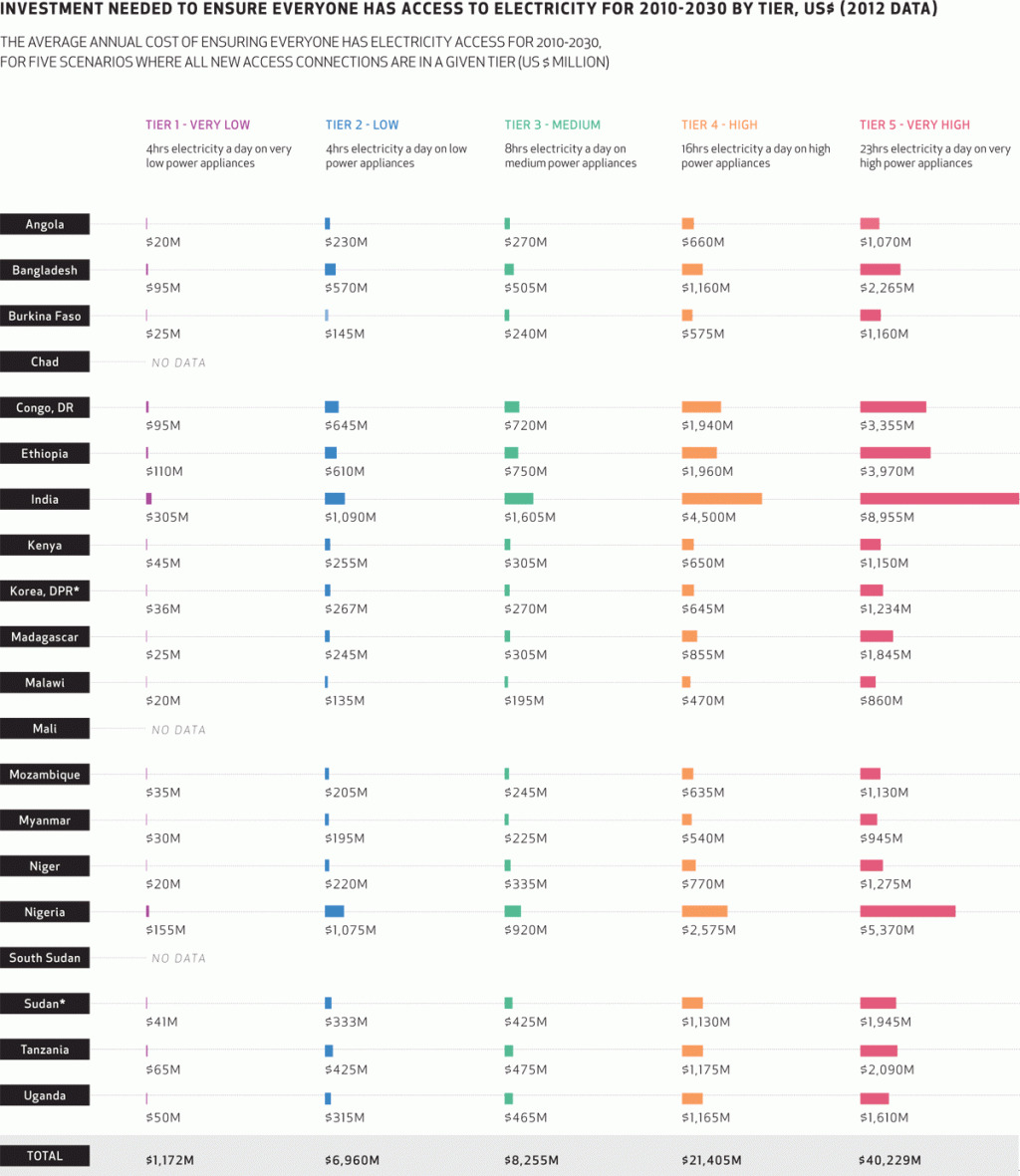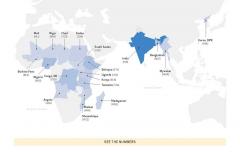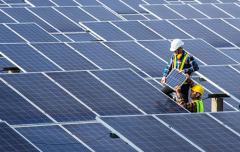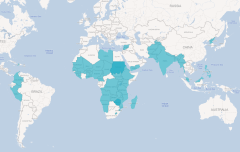Electrification: Investments

Quick facts
The annual average investment needed over 2010-30 to ensure everyone has access to electricity in the 17 high-impact countries covered by the Access Investment Model (AIM) ranges from just over $1 billion to provide everyone with access to 24 hours of electricity a day on very low-powered appliances (i.e tier 1) to around $40 billion to provide everyone with access to 23 hours of electricity a day on very high- powered appliances (i.e. tier 5).
Context
- The Multi-Tier Framework (MTF) redefines energy access to fill the gaps in the traditional binary access measurement, which assesses whether someone has an electricity connection or not. The MTF classifies energy access into tiers to reflect a spectrum of service levels. These range from tier 1 access that supports two light bulbs and a phone charger at a capacity of 20 Watts per hour, to tier 3 access that supports productive uses and a minimum consumption of 1kW per hour, to tier 5 access that allows multiple uses of electricity in a household at a minimum consumption of 8.2 kW per hour. The MTF captures the granularity of energy access attributes such as capacity, duration of supply, reliability, quality, affordability, legality, and safety.
- The World Bank’s Access Investment Model (AIM) provides detailed bottom-up estimates of the average annual cost of reaching universal access to electricity over the period 2010- 2030. It calculates the investment, operating, and fuel costs to provide enough on-grid, mini-grid, or off-grid electricity according to the MTF. It assumes that all people without access are provided with the same level of energy service and calculates costs for the five energy service levels (or tiers) defined in the MTF. AIM covers 17 high-impact countries. At present, it does not include data for Chad, Mali and Zambia.
- The World Bank/ESMAP, in partnership with the Scaling up Renewable Energy Program, is undertaking a global MTF survey to collect baseline data on energy services in 15 countries, including: Kenya, Rwanda, Uganda, Zambia, Ethiopia, Nigeria, Niger, Liberia, India (7 low access states), Bangladesh, Myanmar, Cambodia, Nepal, Honduras, Haiti. The survey, covering household access to electricity and clean cooking, is carried out through a household questionnaire applied to a nationally representative sample of households. The survey will be extended to cover another 10 to 15 countries in 2018–19.
* 2012 Estimate
NOTE: World Bank’s Access Investment Model (AIM) calculates the investment, operating, and fuel costs to provide enough on-grid, mini-grid or off-grid electrification for meeting a specified scenario for energy access based on a multi-tier access framework.
SOURCE: International Energy Agency (IEA) and the World Bank, 2015. ‘Sustainable Energy for All 2015 - Progress Toward Sustainable Energy’.




